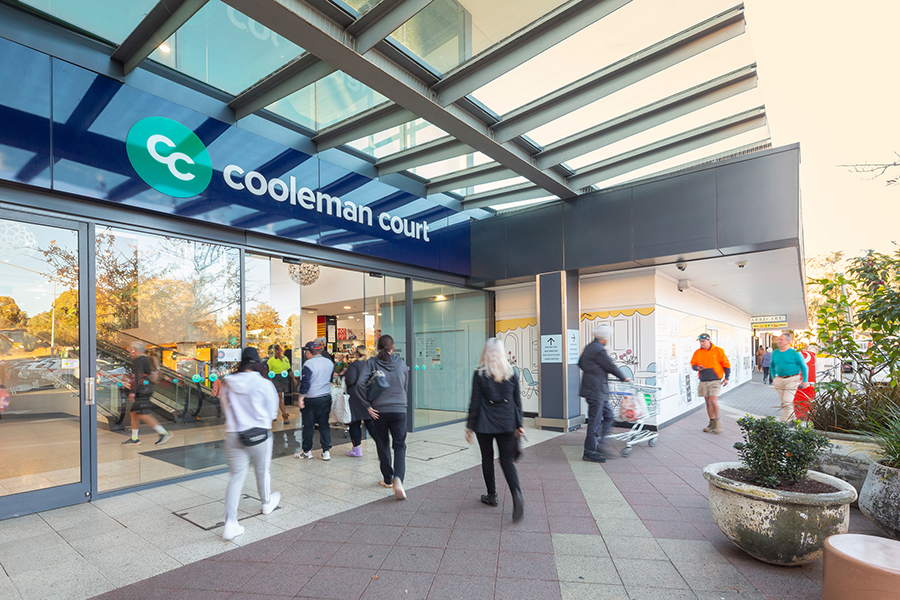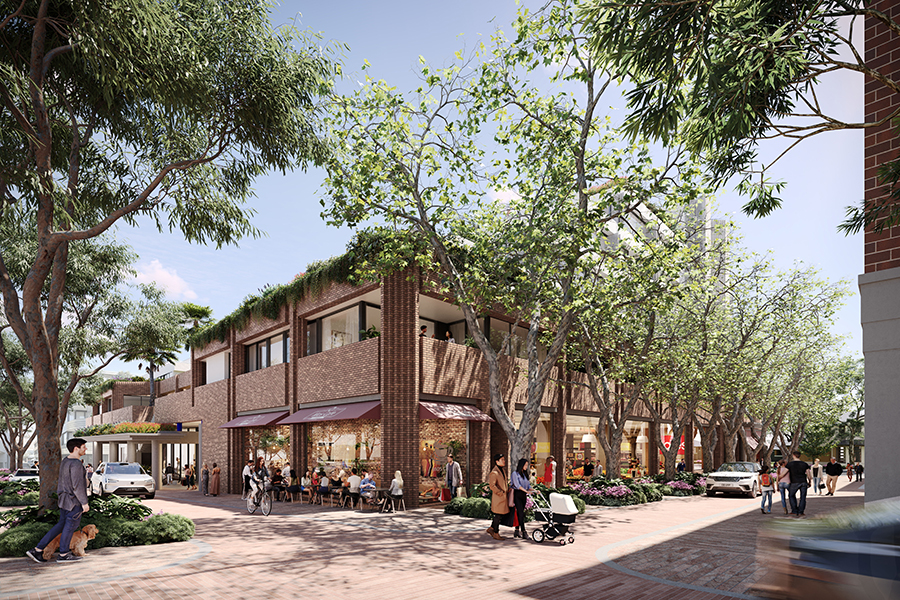The government recently launched a new national counter-terrorism strategy. The shopping centre industry had a significant input. Developing strategies to deal with terrorism in crowded places is nowhere more significant‑ than it is in the case of shopping centres.
Australia’s Prime Minister, Malcolm Turnbull, recently launched a new national counter-terrorism strategy, which has specific relevance to shopping centre owners and operators.
The strategy, titled ‘Australia’s Strategy for Protecting Crowded Places from Terrorism’, starts with the clear statement that “crowded places such as stadiums, shopping centres, pedestrian malls, and major events will continue to be attractive targets for terrorists”.
At the broad level, the need for the strategy reflects Australia’s current terrorism public alert level, which, based on advice from the Australian Security and Intelligence Organisation (ASIO), suggests that a “terrorist attack is probable and may occur”.
More specifically, the new strategy, with a focus on our sector, follows ongoing terrorist attacks on crowded places overseas, such as London Bridge and London’s Borough Market in June 2017, Manchester Arena in May 2017, and the Berlin Christmas Market in December 2016.
More recently, we have seen another frightening attack in Barcelona, late on a weekday afternoon at the kilometre-long pedestrian mall, La Rambla – a key hub for locals and tourists alike.
The Prime Minister has been unequivocal that his, and his Government’s, “number one priority is to keep Australian’s safe”, as he noted in a previous national security statement to our Federal Parliament.
The Prime Minister stated at the launch in Sydney, that the new crowded places strategy “will ensure Australians can continue to freely and safety go to the football, enjoy concerts and visit shopping centres”.
As is well known, as key community assets, shopping centres are amongst the highest visited places in Australia.
Reflecting the critical nature of safety and security issues for our industry, the Shopping Centre Council had the privilege of being part of the Prime Minister’s official statement for the launch of the strategy.
Our Chairman, Peter Allen, CEO of Scentre Group, noted in the Prime Minister’s statement that: “The protection of people is a key issue for the shopping centre industry. It is critical that industry and relevant security agencies work together in close partnership.”
The express focus on our sector as a key ‘crowded place’ sets us apart from other so-called traditional assets, such as office and industrial buildings.
In focusing on ‘crowded places’, in addition to the experience overseas, the Government’s priority remains on the relatively higher-risk places that experience large, predicable crowds, are open and accessible and have symbolic value.
In launching the new strategy, Australia has also adopted the national security lingo of ‘crowded places’, which replaces and updates the previous terminology of ‘places of mass gathering’. This is a key point that shopping centre owners and operators should be aware of as communication around this issue matures and evolves.
This terminology aims to be easier to understand, and also more compatible with language used in other jurisdictions such as the United Kingdom.
In June this year, the United Kingdom issued a new ‘Crowded Places Guidance’ focused on protective security, noting that “crowded places include shopping centres, sports stadia, bars, pubs and clubs which are easily accessible to the public and attractive to terrorists”.
In this sense, it is clear we are part of an international policy theme, thus highlighting the sobering risk that terrorism poses.
A further sobering issue is how the nature of the terrorist threat and attacks that we’ve seen overseas translates directly into Australia.
Predominantly, the attacks on crowded places overseas continue to involve basic, or crude, weapons such as motor vehicles, firearms and explosives which are readily available. Put simply, there’s nothing too complicated about the weapons and tactics used.
The basic nature of these attacks is what prompted Prime Minister Turnbull to commission the development of the new strategy.
We all remember the reports of the terrorist attack on Bastille Day in July 2016, on a coastal promenade in Nice, France, just a short distance from the Italian border.
In Melbourne, 16,000 kilometers away, the implications of a 31-year old male driving a 19-tonne truck deliberately into a collective crowd of around 30,000 people, at around 10:30pm, indiscriminately killing more than 80 people and injuring more than 400, clearly reverberated in Australia.
It was this incident, and related advice, for which the Prime Minister initiated the new crowded places strategy, as he detailed publicly in Federal Parliament in November 2016.
Addressing the Parliament, the Prime Minister noted that “immediately following the Nice attack”, he requested Australia’s Counter-Terrorism Coordinator to review relevant critical issues, and that the development of a new national strategy had been committed to “as a priority”.
The Nice attack put the community on an even higher alert than before, noting that it occurred not long after the November 2015 Paris attacks at the Stade de France, Bataclan Theatre and cafes and restaurants.
A critical game-changer, with the Nice attack, was its simplicity.
Not that it was the first time such a weapon and tactic was used, but the simple act of a person driving a readily available motor vehicle into a crowded place provided a new level of shock.
In the aftermath, it was equally shocking when it emerged that the perpetrator was able to do basic surveillance and preparations, including taking ‘selfies’, in the days before the attack, which went completely undetected.
The truck used in the attack, a rented Renault Midlum, is not dissimilar to vehicles seen on Australia’s roads including those used in deliveries to shopping centres. In the recent attack in Barcelona, the vehicle used was a light commercial van.
This brings me to the detail of the strategy, which outlines what I believe to be three key points that shopping centre owners and operators should note.
A first point is that the strategy clearly outlines that owners and operators have primary responsibility in protecting crowded places from terrorism. This includes “a duty of care to take steps to protect people that work, use or visit their site from a range of foreseeable threats, including the threat of a terrorist attack”.
Further, the strategy notes that “developing, implementing and regularly testing a comprehensive security plan is a matter of good business and a corporate responsibility”.
A second key point is that the strategy has a clear focus on ongoing partnerships between government and industry.
The importance of partnerships cannot be understated, as was noted by my Chairman Peter Allen when he stated that “it is critical that industry and relevant security agencies work together in close partnership”.
The strategy articulates a new ‘Crowded Places Partnership’ as a new ‘national framework for cooperation’. A key mechanism for this partnership are new ‘Crowded Places Forums’ in each relevant jurisdiction.
This partnership aims to provide owners and operators, such as shopping centres, with access to quality and timely terrorism threat and protective security information. This could be from credible and formal sources such as intelligence agencies, police, and other owners and operators.
Governments frequently trade on the notion of industry partnerships, yet often they are flimsy and don’t deliver in a material way.
In my view, however, the commitment to effective and trusted partnerships in the new strategy is compelling. In addition to the strategy’s targeted approach, and the mechanisms noted above, this commitment is equally about its strong basis and foundation.
Aside from the strategy being initiated and launched by the Prime Minister, it was developed by the Australia and New Zealand Counter-Terrorism Committee (ANZCTC), which is the chief coordination group for Australia’s counter-terrorism various capabilities and arrangements. The ANZCTC is made up of all jurisdictions, including the heads of relevant security and intelligence agencies.
This itself indicates both a high-level buy-in on the strategy’s partnership arrangements.
Further, as part of the process of finalising the strategy, its guiding principles were noted at the Council of Australian Government (COAG) meeting in Hobart on 9 June 2017. This further reinforces it is a true national strategy – rather than being just a Federal Government strategy – with commitments from all of our political leaders.
When the strategy was noted by COAG, our national leaders including the Prime Minister and our state Premiers agreed that “close cooperation between all levels of government and with the private sector is critical to preserving our enjoyment of these places”.
The third and final key point to note is the strategy’s practical components, including the need for a risk-based approach and the notion of ‘layered security’ arrangements.
A starting point here is the advice that “terrorist attack planning in Australia will probably continue to involve weapons and tactics that are low cost and low capability. This method has been used by terrorists for attacks on crowded places overseas to devastating effect.”
The strategy continues: “Basic weapons (including knives and vehicles), firearms, and explosives could all be used in any attack.”
In this sense, the strategy includes complementary and robust modules and guidelines – all of which are available at the national security website: nationalsecurity.gov.au. These include a self-assessment tool to help determine risk, and guidelines on active armed defenders (e.g. shooters, bladed weapon), improvised explosive devices, hostile vehicles and chemical weapons.
The guidance around ‘layered security’, in applying multiple and complementary layers of protective security measures, is also instructive.
First, this includes Deterring a potential attack such as through physical and electronic target-hardening measures including perimeter lighting, warning signs, security patrols and CCTV.
Second, there are proposed measures to Detect an attack, such as intruder detection systems, vehicle screening, bag inspections and reporting of suspicious behaviour.
Third, there are Delay measures such as physical measures like appropriate bollards and trained staff interventions.
Fourth, there are Respond measures, such as reliable emergency communication, properly trained staff and regularly exercised plans.
It is clearly unfortunate that we operate in an environment where terrorism risk is real, but it is pleasing that Prime Minister Turnbull has led the new crowded places strategy, which provides a targeted and risk-based approach for our industry.
It is also pleasing that Australia’s governments have committed to a partnership approach with industry, which also has strong foundations and mechanisms to enable it to be effective.
At an industry level, the Shopping Centre Council continues to work closely with our long-standing Safety and Security Committee where we can help improve the sector’s approach and engagement with relevant security agencies. As this evolves, engagement with our retailers, staff and community remains critical.
As I have said before, the ultimate objective continues to be safe and secure shopping centres, and ensuring that we play our part, in partnership with relevant agencies, to make a positive contribution towards Australia’s national security. The new crowded places strategy is clearly a step in the right direction.




















